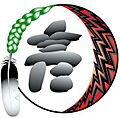Aboriginal Healing Foundation facts for kids
 |
|
| Formation | March 30, 1998 |
|---|---|
| Dissolved | September 30, 2014 |
| Legal status | not-for-profit, private corporation |
| Headquarters | Ottawa, Ontario |
|
Executive Director
|
Mike DeGagne |
The Aboriginal Healing Foundation was a special non-profit group in Canada. It was started in 1998 to help Indigenous communities deal with the lasting effects of residential schools. These schools caused many problems for Indigenous families and communities. The Foundation worked to support healing and well-being. It received money from the Canadian government, but its funding stopped in 2014.
Contents
History of the Healing Foundation
The Aboriginal Healing Foundation began on March 30, 1998. It was created after talking with people who went to residential schools. It also consulted with major Indigenous groups like the Assembly of First Nations and the Métis National Council. The main goal was to help Indigenous communities heal from the residential school system's impacts.
The Canadian government first gave the Foundation $350 million. This money was meant to help residential school survivors and their communities across Canada. The Foundation was part of a bigger plan called "Gathering Strength, Canada's Aboriginal Action Plan." This plan started in January 1998. The Foundation was originally set to operate until March 31, 2009.
The first leader of the Foundation was Georges Erasmus. A board of 17 directors helped guide the organization. In 2005, the Foundation received an extra $40 million from the government.
In 2007, a big agreement called the Indian Residential Schools Settlement Agreement was made. This agreement gave the Healing Foundation another $125 million. It also allowed the Foundation to continue its work for longer. Some of this money came from the federal government. Also, 50 Roman Catholic Church groups involved in the settlement were asked to pay $29 million. This money was for community healing programs. There were some disagreements about these payments. In 2013, the Canadian government even took legal action for some unpaid money.
Overall, the Foundation received $515 million from the Canadian government. It also earned over $537 million in interest, which was used for more community projects. In 2010, the government led by Stephen Harper cut the Foundation's funding. This cut led to the Foundation closing in 2014. Many community healing programs also had to stop because of this. After it closed, the Foundation's research library and records were given to the Shingwauk Residential Schools Centre at Algoma University.
Supporting Community Healing Projects
The Aboriginal Healing Foundation helped many communities. It asked groups to propose ideas for healing programs. This first call for ideas happened on December 3, 1998. Groups could focus on three main areas:
- Developing healing programs in Indigenous communities.
- Creating healing centers.
- Restoring balance, honor, and history.
The first round of funding gave $19.4 million to projects across Canada. Over its time, the Foundation funded more than 1,500 community healing projects. These projects helped people in many ways. They offered support and resources for healing from the residential school experience.
How Funding Was Checked
The Foundation's work was regularly checked by the government. The Foundation also checked the programs it funded. In 2009, Indian and Northern Affairs Canada (INAC) reviewed the Foundation's programs. They looked at project files and talked to staff and experts. They also studied how healing projects helped people in communities.
The review found that the Foundation did a great job managing the money. It also helped a lot with community healing. However, the review noted that more healing work was still needed. INAC suggested that community-based healing should continue. They recommended that the Foundation keep getting funding.
Research and Knowledge Building
Besides funding projects, the Aboriginal Healing Foundation also had a special job to do research. Its goal was to create a knowledge base about the long-term effects of residential schools. This research also looked at how communities and health were impacted. This part of their work was agreed upon in 1998 with the Canadian government. The Foundation worked with researchers and writers. They published many books and studies on residential schools, healing, and Indigenous issues.
Gail Guthrie Valaskakis was the first research director from 2000 to 2007. After she passed away, Jonathan Dewar took over from 2007 to 2012. Their work led to many important books being published.
The Foundation also had a special library. It was named the Gail Guthrie Valaskakis Memorial Resource Library. This library focused on residential schools, healing, and Indigenous people. It held over 6,000 unique items. These included videos, books, and research reports. In 2011, after funding cuts were announced, the library's contents were given to the Shingwauk Residential Schools Centre.
See also
- Canadian Indian residential school system
- Truth and Reconciliation Commission (Canada)
- First Nations
Images for kids


